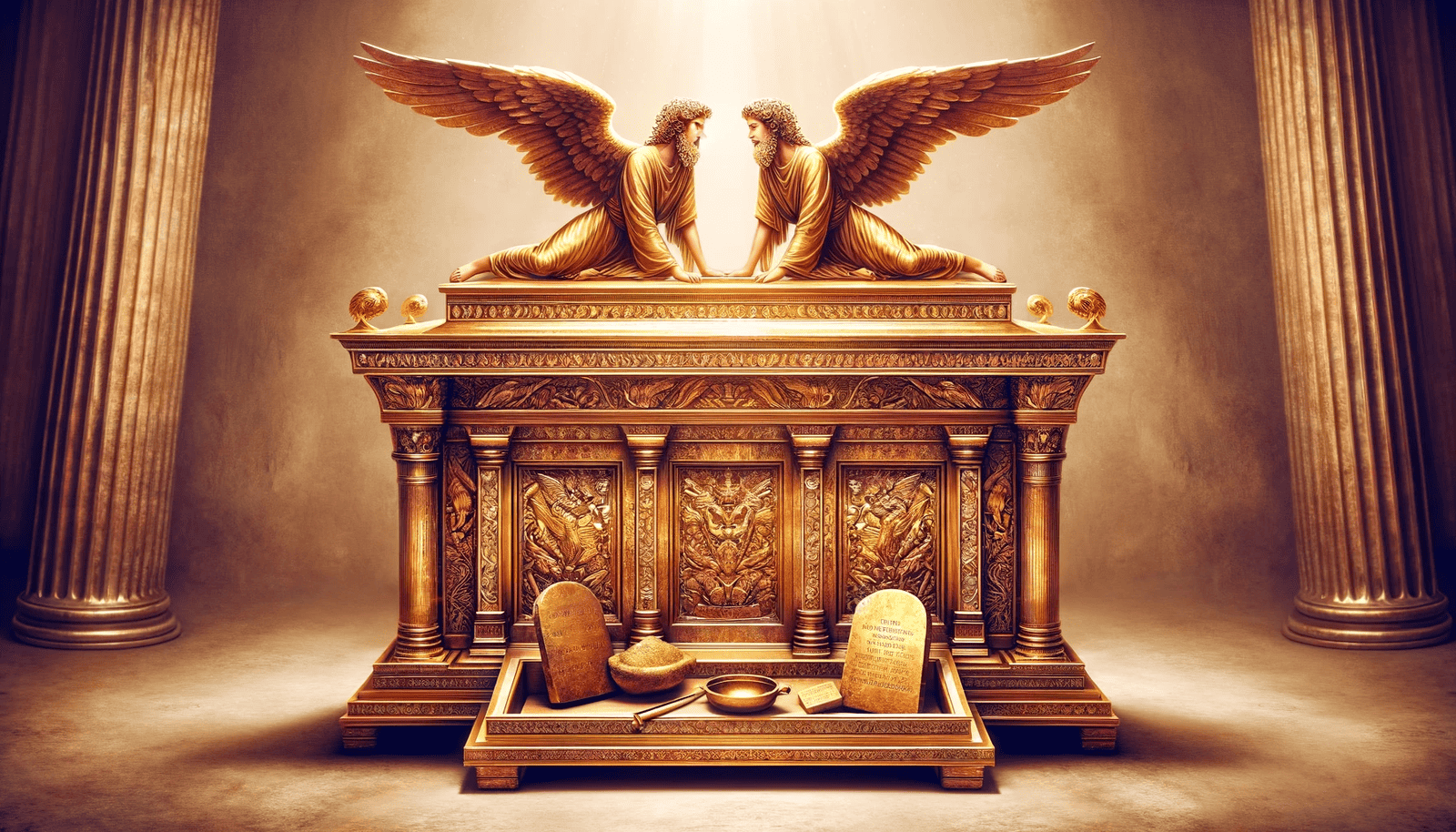The Ark of the Covenant, as described in the King James Version (KJV) of the Bible, contained several significant items, and it held a profound spiritual and symbolic significance, both in the Old Testament and in relation to the New Testament.
Contents of the Ark of the Covenant:
- The Tablets of the Law: The stone tablets on which the Ten Commandments were inscribed, given to Moses at Mount Sinai (1 Kings 8:9, Exodus 25:16).
- Aaron’s Rod: A rod that miraculously budded to symbolize God’s selection of Aaron as high priest (Hebrews 9:4, Numbers 17:10).
- A Golden Pot of Manna: A jar containing manna, the miraculous food provided by God to the Israelites in the wilderness (Hebrews 9:4, Exodus 16:33-34).
Is there a connection between the Ark of the Covenant and the rainbow in the Bible?
The meaning of rainbow in Bible holds significance as a symbol of God’s covenant with Noah after the Great Flood. The Ark of the Covenant also represents God’s presence and covenant with the Israelites. Both the rainbow and the Ark symbolize God’s faithfulness to His promises in the Bible.
Does the Ark of the Covenant have any significance in the comparison of slavery to sin and freedom in Christ?
The Ark of the Covenant holds great significance in the slavery to sin comparison in the Bible. It represents the presence of God and the covenant relationship between Him and His people. Just as the Israelites were delivered from physical slavery, Christ offers freedom from spiritual bondage to sin through His sacrifice.
Benefits and Relationship to the New Testament:
- Symbol of God’s Presence: The Ark represented God’s presence among His people. In the New Testament, this is paralleled by the belief in Christ’s presence among believers (Matthew 28:20).
- Point of Atonement: The mercy seat on the Ark was the place where the high priest made atonement for the sins of Israel. This prefigures Christ’s role as the ultimate high priest, offering atonement through his sacrifice (Hebrews 9:11-14).
- Guidance and Direction: The Ark was used as a guide during the Israelites’ travels. In the New Testament, Jesus is seen as the spiritual guide and leader (John 14:6).
- Covenant Promise: The Ark symbolized the covenant between God and Israel. The New Testament introduces the new covenant in Christ (Luke 22:20, Hebrews 8:6-13).
- Divine Law: The tablets of the Law in the Ark represent God’s standards and laws. In the New Testament, Jesus upholds the law and fulfills its righteous requirements (Matthew 5:17).
- Priesthood Symbolism: Aaron’s rod symbolized the priesthood. Jesus is described as a high priest after the order of Melchizedek in the New Testament (Hebrews 5:5-10).
- God’s Provision and Sustenance: The manna in the Ark symbolized God’s provision. Jesus is referred to as the “bread of life” in the New Testament, providing spiritual sustenance (John 6:35).
- Holy of Holies and Access to God: The Ark was kept in the Holy of Holies, where only the high priest could enter once a year. Jesus’ sacrifice is seen as granting believers direct access to God (Hebrews 4:16).
- Faith and Obedience: The Ark was a testament to the Israelites’ faith and obedience. Similarly, faith in Jesus and obedience to his teachings are central themes in the New Testament (James 2:17-26).
- God’s Immutable Word: The preservation of the Law in the Ark signifies the unchanging nature of God’s Word. Jesus, in the New Testament, is described as the Word made flesh, embodying this unchanging truth (John 1:1,14).
The Ark of the Covenant thus serves as a rich symbol in biblical typology, pointing forward to many of the key teachings and events in the New Testament, especially relating to Jesus Christ’s role and mission.
Affiliate Disclosure: "As an Amazon Associate I earn from qualifying purchases made from links in this post. We are a participant in the Amazon Services LLC Associates Program, an affiliate advertising program designed to provide a means for us to earn fees by linking to Amazon.com."

